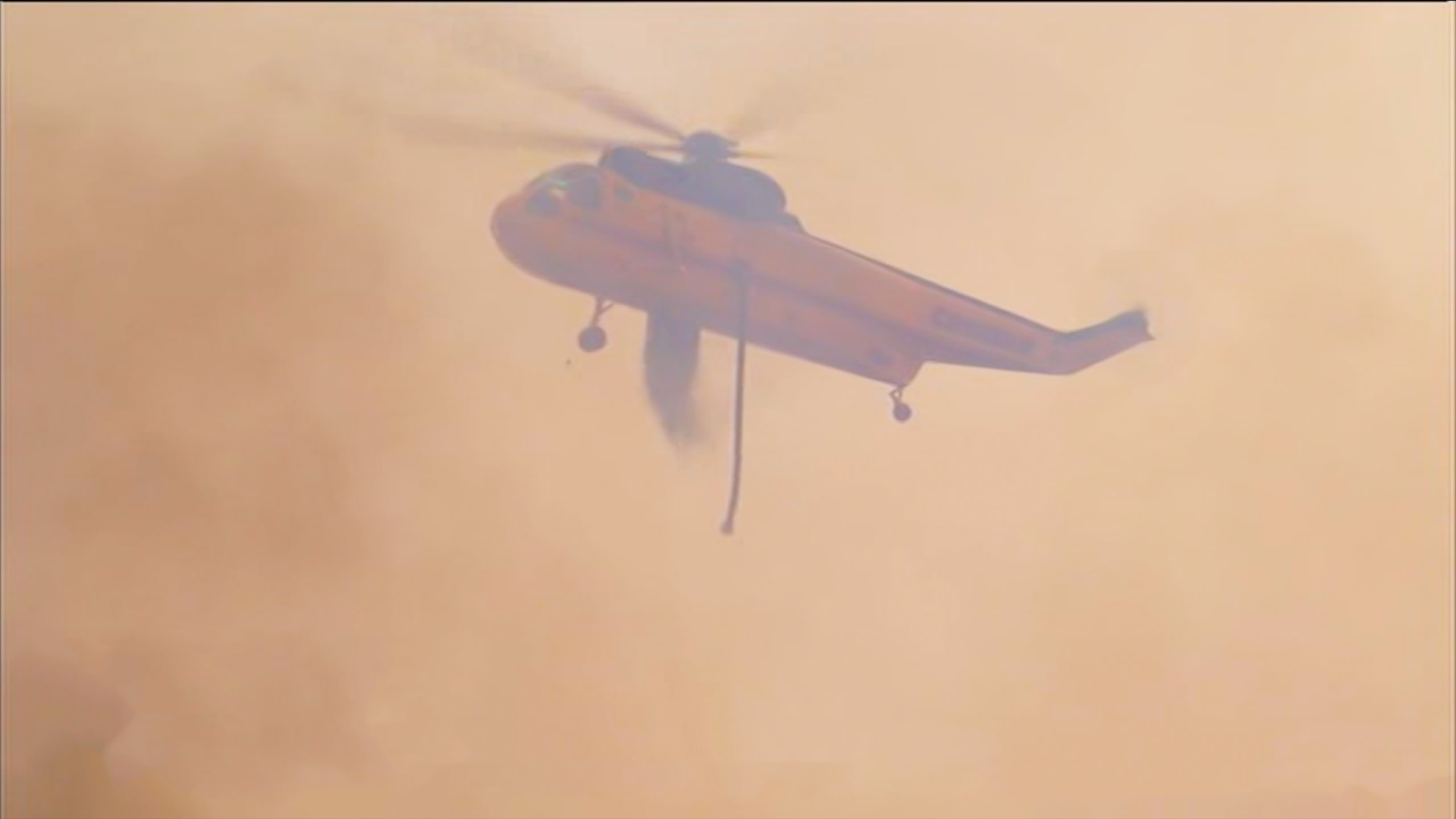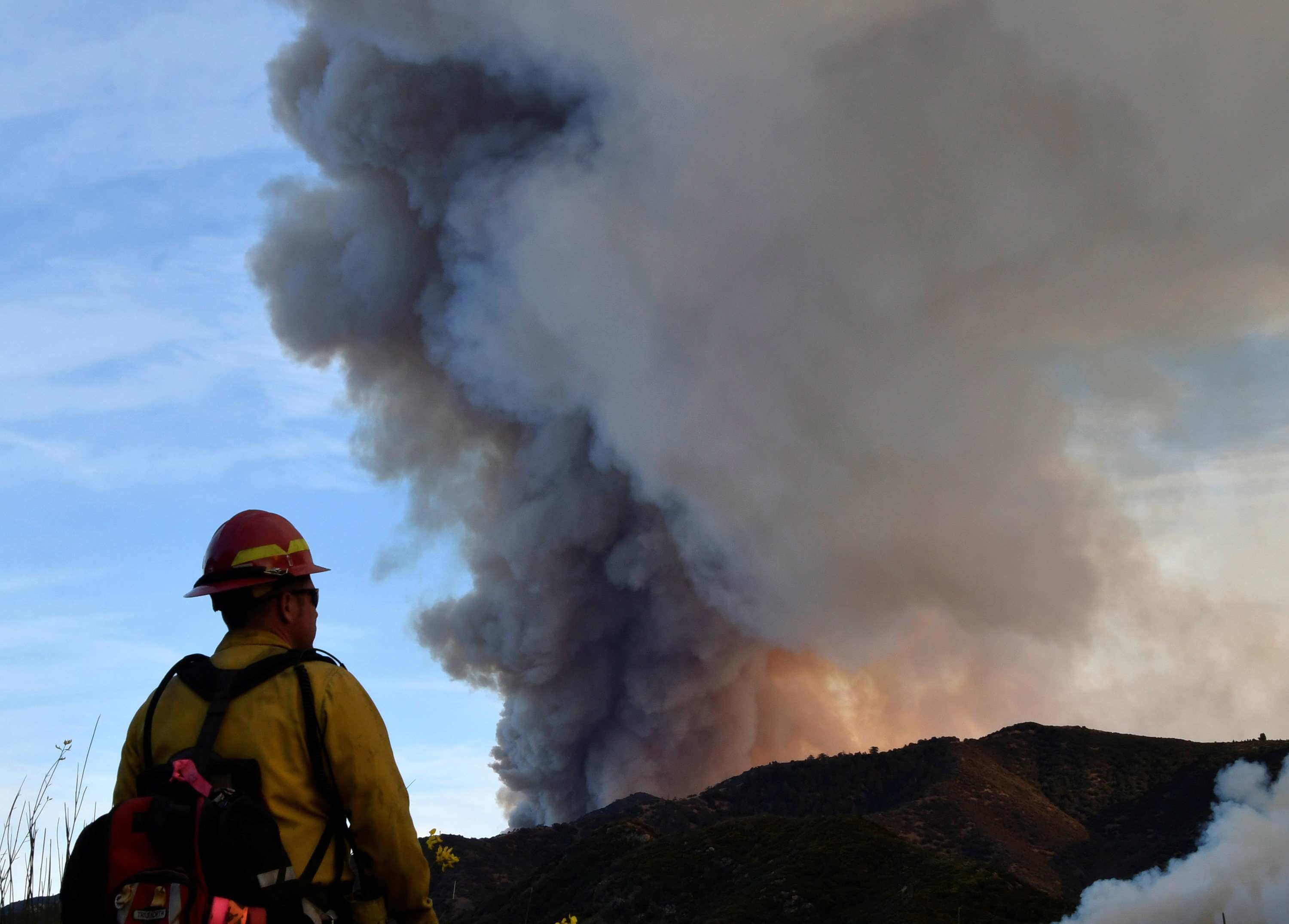
World
10:19, 11-Dec-2017
Wildfires rage on in California, further evacuations
CGTN

Firefighters continued to battle blazing infernos and strong winds Sunday as more residents were forced to flee their homes, in what have been some of California’s worst wildfires on record.
Authorities ordered residents in parts of Carpinteria and Montecito to leave early on Sunday as the Thomas Fire edged closer to Santa Barbara, about 100 miles (160 km) northwest of Los Angeles on the scenic central California coast.
The blaze, the worst of six major fires in Southern California in the last week and already the 10th largest on record in the state since 1932, has blackened 173,000 acres (62,726 hectares), destroyed hundreds of structures and left nearly 90,000 homes and businesses without power.

Firefighters attack the Thomas Fire’s north flank with backfires as they
continue to fight a massive wildfire north of Los Angeles, near Ojai ,
California, December 9, 2017. /Reuters Photo
Firefighters attack the Thomas Fire’s north flank with backfires as they continue to fight a massive wildfire north of Los Angeles, near Ojai , California, December 9, 2017. /Reuters Photo
The combination of Santa Ana winds and rugged terrain in the mountains that run through Santa Barbara and Ventura counties have hampered firefighting efforts, and officials said the Thomas Fire was only 15 percent contained on Sunday.
The National Weather Service said winds of up to 55 miles (88 km) per hour were expected on Sunday evening, up from gusts of 40 miles per hour on Saturday.
The fires burning across Southern California have forced the evacuation of some 200,000 people and destroyed nearly 800 structures.
Residents and firefighters alike have been alarmed by the speed with which the fires spread.

An aircraft drops fire retardant as firefighters take advantage of light winds to attack the Lilac Fire, a fast-moving wildfire in Bonsall, California, December 8, 2017. /Reuters Photo
An aircraft drops fire retardant as firefighters take advantage of light winds to attack the Lilac Fire, a fast-moving wildfire in Bonsall, California, December 8, 2017. /Reuters Photo
So far, however, authorities have reported only one fatality.
US President Donald Trump has issued a state of emergency for California, authorizing the release of federal funds.
The week's infernos capped California's deadliest year ever for wildfires. More than 40 people died in October when fires swept through the state's wine-producing counties north of San Francisco.
In a television interview on Sunday, California Governor Jerry Brown said that climate change meant that the state was becoming increasingly vulnerable and that wildfires were becoming the new normal in some parts.
"The fire season used to be a few months in the summer, now it's almost year-long.”

A firefighter looks out towards the Thomas Fire, a massive wildfire north of Ojai, California, December 9, 2017. /Reuters Photo
A firefighter looks out towards the Thomas Fire, a massive wildfire north of Ojai, California, December 9, 2017. /Reuters Photo
"Scientists are telling us: 'This is the kind of stuff that's going to happen.' And we got to deal with it."
Brown has been one of the most vocal critics of Trump's decision to pull the United States out of the Paris accord on global warming and he renewed his attacks on the administration over its attitude towards climate change.
Some of the other fires, in San Diego and Los Angeles counties, have been largely controlled.
Both the Creek and Rye fires in Los Angeles County were 90 percent contained by Sunday morning, officials said, while the Skirball Fire in Los Angeles' posh Bel Air neighborhood was 75 percent contained.
North of San Diego, the 4,100-acre (1,659 hectares) Lilac Fire was 60 percent contained by Sunday.
9956km
Source(s): AFP
,Reuters

SITEMAP
Copyright © 2018 CGTN. Beijing ICP prepared NO.16065310-3
Copyright © 2018 CGTN. Beijing ICP prepared NO.16065310-3